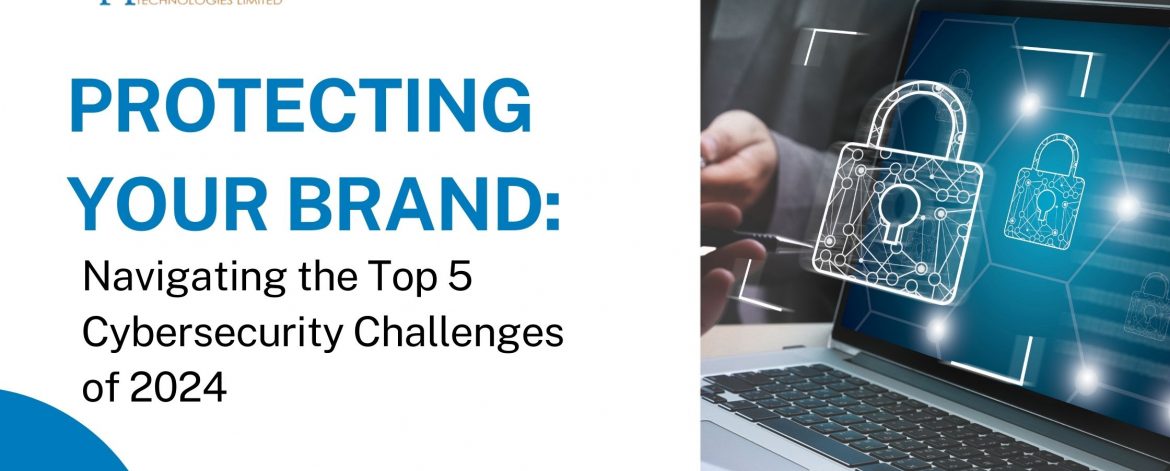Cybersecurity is becoming increasingly challenging for organizations, especially in Africa. In 2024, it should be the priority of every entrepreneur, industry leader, and corporate executive to ensure that their organizations are properly protected from cyber attacks.
To properly protect your brand this year, you need to know how to navigate the top cybersecurity challenges of 2024. However, you have to first know the challenges before knowing how to navigate them.
Cybersecurity is a constantly evolving field, and 2024 will bring new challenges and opportunities for organizations like yours to protect their data, systems, and users. A study carried out by Africa Financial Industry Barometer last year showed that 97 percent of the leaders of financial institutions on the continent mentioned cybersecurity as a major threat to the industry. Another study revealed that the major cybersecurity threats experienced by organizations on the continent include phishing attacks, ransomware, mobile malware, cryptojacking, and insider threats.
As mentioned above, to protect your brand, you and your organization must stay abreast of the latest cybersecurity threats and challenges this year. In this post, we will explore the top five cybersecurity trends that will shape 2024 and how your organization can navigate them to ensure maximum protection.
Navigating the Top 5 Cybersecurity Challenges of 2024
Here are the top five cybersecurity challenges of 2024 you need to learn how to navigate:
Understanding and implementing Zero Trust architecture
Zero Trust is a security model that assumes no trust between users, devices, and networks and requires continuous verification of identity and access. This model is based on the principle of least privilege, which means granting only the minimum necessary permissions to perform a task. The challenge is that many brands, including those in Africa, are yet to understand the Zero Trust architecture or how to implement it to protect their brands. This cybersecurity approach relies on a set of integrated digital identity solutions to ensure security and compliance. Some of these solutions include identity governance, multifactor authentication, and privileged access management. Just like yours, organizations should adopt Zero Trust as a strategic priority, as it can help them reduce cyber risks, improve user workflows, and support digital transformation.
Artificial intelligence (AI)

AI and machine learning are revolutionizing cybersecurity, both as a weapon and a shield. Cybercriminals are using AI to launch more sophisticated and targeted attacks, such as phishing, adaptive malware, and deepfakes. On the other hand, organizations are using AI to automate and enhance their security capabilities, such as threat detection, response, and investigation. This year, your organization should leverage AI to augment its cybersecurity team’s efforts while also being aware of the potential risks and ethical implications of AI.
Ransomware
Ransomware is a type of malware that encrypts the victim’s data and demands a ransom for its decryption. It has become one of the most prevalent and damaging cyber threats, affecting organizations of all sizes and sectors. This threat is evolving in terms of tactics and tools, such as ransomware-as-a-service models, which provide cybercriminals with access to ransomware infrastructure and support for a fee. You need to adopt a proactive approach at your organization to prevent and mitigate ransomware attacks. This will be done by implementing robust security measures conducting regular security awareness training, maintaining up-to-date backups, and having a recovery plan in place.
Supply chain and third-party vulnerabilities

Supply chains and third parties are essential for the operation and innovation of organizations, but they also pose a significant threat to their security. As recent high-profile attacks have shown, cybercriminals can exploit the weak links in the supply chain and third-party ecosystem to compromise the target organization. Ensure that your organization carefully vets its suppliers and third parties. Also, make sure that you have strong security standards and practices in place. Finally, you should secure third-party access to your critical assets by extending Zero Trust principles and implementing a vendor-privileged access management solution.
Data privacy regulations
Data privacy is a fundamental right and a growing concern for customers and regulators. It is important to note that data privacy regulations are constantly evolving, and organizations need to comply with them to avoid fines and reputational damage. Ensure that your organization invests in comprehensive data privacy management programs. Examples of these programs include policies and procedures, risk assessments, and security measures. Investing in these programs helps your organization to protect the personal information of both your customers and employees.
Conclusion
Cybersecurity is a dynamic and complex field. This post has shown you the top five cybersecurity challenges of 2024 to prepare for and how to navigate them to protect your brand. Achieving this can be quite difficult, especially if you are a novice. This is where our experience at Support Link Technologies comes in. We can help you set up the right cybersecurity measures to meet your organization’s needs and ensure you are protected from cyber risks.


